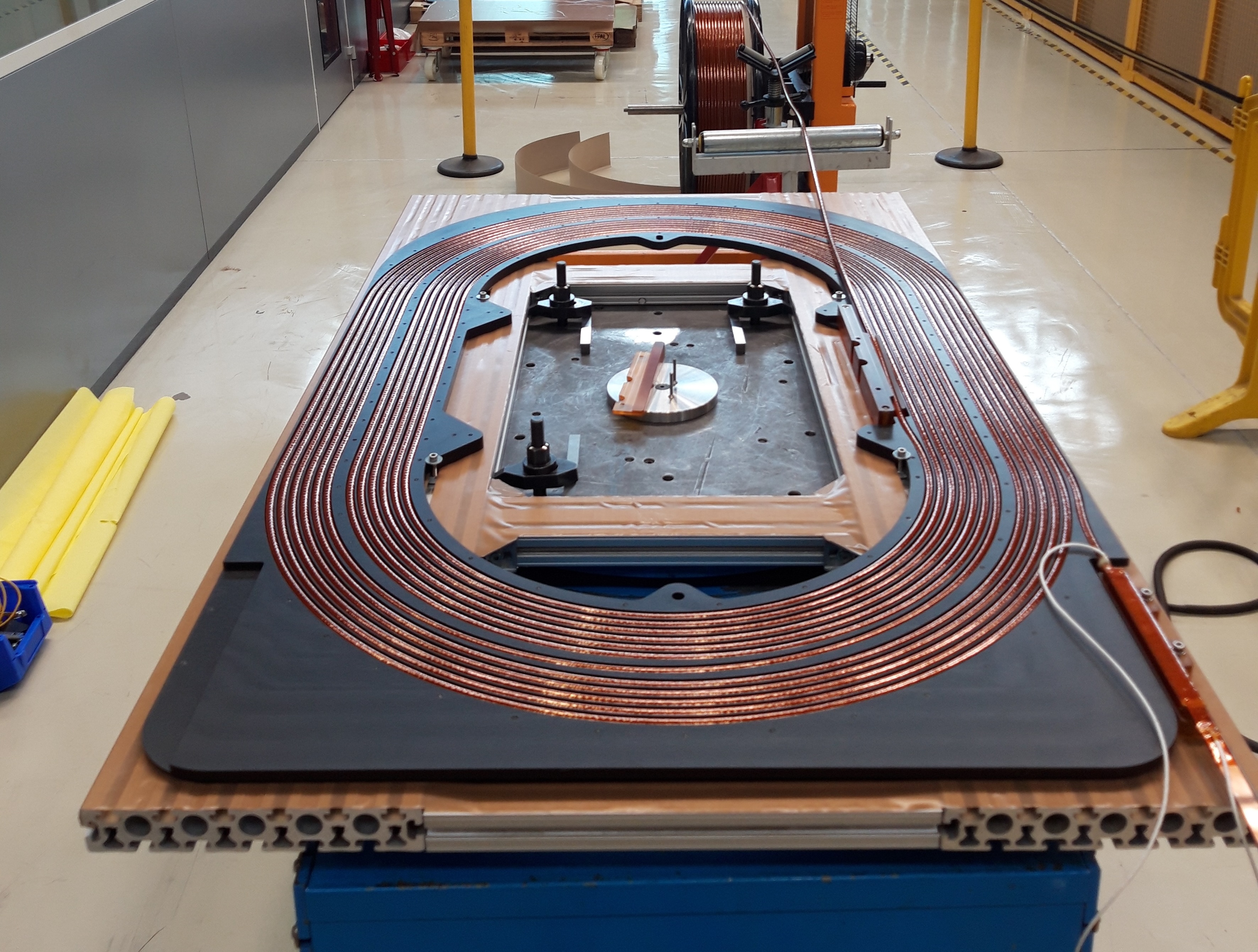
View of the demonstrator magnet for the SHiP experiment. (Image: Axelle Collioud, Emma Tommasi/CERN)
How can we advance cutting-edge research but consume less energy? CERN's scientists are working on innovative solutions, and superconductivity is one of the key ingredients.
A team has recently successfully tested a demonstrator magnet coil that will significantly reduce the power consumption of certain experiments. The coil is made of magnesium diboride (MgB2) superconducting cables, which are used in the high-intensity electrical transfer line that will power the High-Luminosity LHC (HL-LHC), the successor to the LHC. It is mounted in a low-carbon steel magnetic yoke that holds and concentrates the field lines, in a so-called superferric configuration.
This innovative magnet is intended for the SHiP experiment, which is designed to detect very weakly interacting particles and is scheduled to be commissioned in 2031. One of the detector's two magnets must produce a field of approximately 0.5 tesla. The field is of moderate intensity but must be produced in a huge volume that is 6 metres high and 4 metres wide and deep. A normal-conducting resistive electromagnet would have an electrical power of over one megawatt and, as it would have to operate continuously, its power consumption would be high.
Hence the idea of using a superconductor that conducts electricity without resistance and thus without energy loss from heating. This is the principle behind the LHC magnets. However, they are based on a niobium-titanium alloy, which requires them to be cooled to a very low temperature of -271 °C (2 kelvin) using superfluid helium produced by a complex cryogenic plant.
Magnesium diboride cables have the advantage of being superconducting at -253 °C (20 kelvin). They can be cooled using gaseous helium and therefore require a less complex cryogenic system, thus offering better thermodynamic efficiency. They could not be used for accelerator magnets such as those of the LHC, which generate fields of around 8 tesla. However, they are suitable for a large magnet with a moderate field like that of SHiP.

Built last September, the 1-metre-long demonstrator coil has just successfully passed operating tests in which it was cooled by gaseous helium to temperatures of 20 to 30 kelvin. Although many steps remain to be completed before the SHiP magnet is ready, these are promising tests that open up prospects for this technology both at CERN and in industry.
"Such a magnet could consume up to 100 times less electrical power than an ordinary superferric magnet," says Arnaud Devred, who is carrying out the project with a team from CERN's Magnets group. "In the longer term, we could, for example, consider retrofitting certain magnets with MgB2 coils in order to reduce their electricity consumption. This project therefore represents a great way of showcasing the technological developments for the HL-LHC."
The superconducting links of the HL-LHC are attracting a lot of interest because they use high-temperature superconductors, whose large-scale use would allow significant energy savings in many areas, including in our everyday lives. Thanks to this highly innovative development, the scope of this technology can be extended to include electromagnets. The SHiP spectrometer magnet could be one of the first applications.






